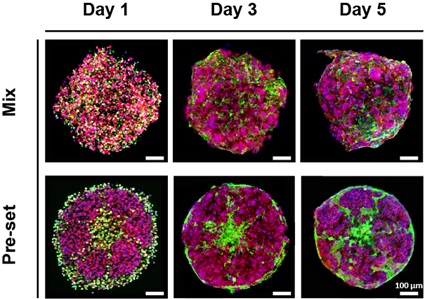Leading 3D bio printing technology.
- Approximately 90% of drug candidates tested on animals fail due to toxicity or lack of efficacy that were not identified through animal testing. Animal testing is also controversial due to ethical issues. Therefore, if we can make more reliable in-vitro model, we can replace animal testing and take advantages scientifically and ethically. The organoid that we are developing is the strongest candidate to solve this issue.
- It is known that the arrangement of different types of cells is critical to functionality and performance of an organoid and 3D bioprinting technology can make more similar structures with real human tissue. We are expecting that the advantages of 3D bioprinting can significantly improve the performance and reproducibility of an organoid. This 3D bioprinting technology can be utilized to print skin, liver and heart organoids.
- With pre-set technology which is patented by T&R Biofab, 3D organoids will provide us a way to make more precise and high-resolution structures. The below figure shows organoids which have similar structure liver lobule, and the resolution of the pre-set extrusion technique is approximately 30㎛.1

Figure Comparison of co-culture methods between homogeneous mixing (Mix) and heterogeneous pre-set extrusion (Pre-set) cell printing. Red fluorescent-labeled cells are HepG2 (liver cancer cell) and green fluorescent-labeled cells are HUVEC (endothelial cell)1 1. Pre-set extrusion bioprinting for multiscale heterogeneous tissue structure fabrication. Bikofabrication 10(3): 035008 (2018)[PubMed]



